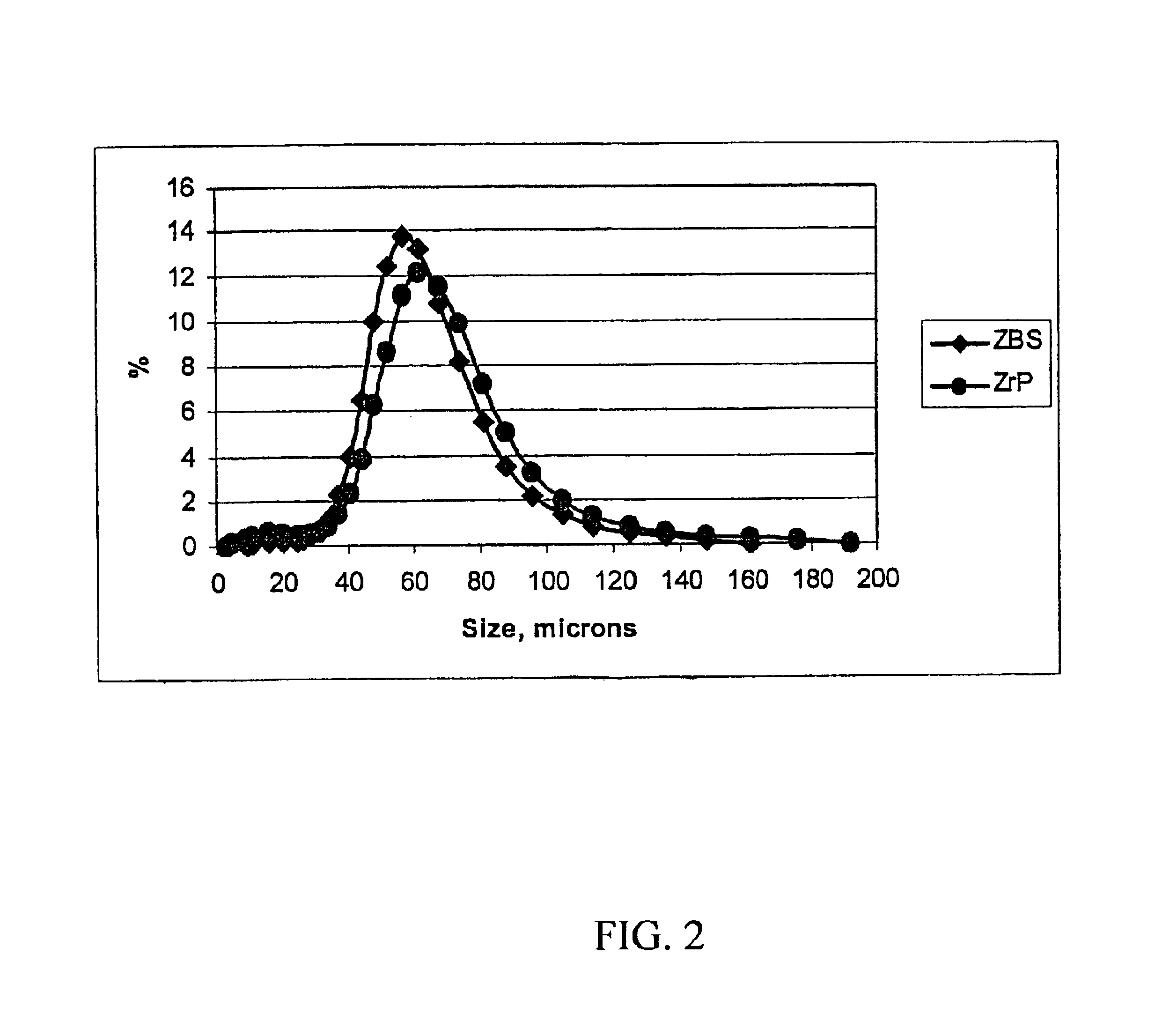Zirconium phosphate and method of making same
a technology of zirconium phosphate and zirconium phosphate, which is applied in the direction of separation processes, physical/chemical process catalysts, nickel compounds, etc., can solve the problems of loss of capacity and deterioration of sorption kinetics, poor mechanical and hydrodynamic properties of sorbents, and low thermal stability
- Summary
- Abstract
- Description
- Claims
- Application Information
AI Technical Summary
Benefits of technology
Problems solved by technology
Method used
Image
Examples
example 1
[0033]A zirconium phosphate according to the invention was prepared by the following multi-step procedure. First, a slurry containing 750 g of basic zirconium sulfate (40% ZrO2)(MEI, ZBS PP142A), with a particle size of 50-60 microns, in 3.0 L of the acidic phosphorus-containing solution is made. The acidic phosphorus containing solution had the following composition: 681 g of 75% H3PO4, 300 g of 62% H2SO4 and water to maintain total volume of 3.0 L. The P / Zr ratio in the slurry was 2.13:1; the H2SO4 / H3PO4 ratio was 0.36:1 and the molar concentration of H3PO4 was 1.73 M. The slurry was heated to a boil and maintained at temperature for 2 hours under constant stirring. After the reaction was complete the product was filtered and washed with 2.0 kg of water to produce zirconium phosphate in the H-form. To produce the sodium form, the zirconium phosphate was re-slurried in 2 L of water and 30% NaOH solution was added gradually for 30-40 min. to adjust the pH of the zirconium phosphate ...
example 2
[0035]In this example, 526 g of hydrous zirconium oxide (57% ZrO2) having a particle size of 50-60 microns was used as the source of zirconium. All other operations and amounts of reagents were similar to those used in Example 1. The dried product is zirconium monohydrogen phosphate with particle size of 50-60 microns. According to elemental analysis the P / Zr ratio in the solid is 2.00:1. The 31P NMR peak position is at −13.7 ppm for the H-form. The surface area is 9.5 m2 / g and water loss at 209° C. (LOD) is <1%.
example 3
[0036]In this example, 750 g of zirconium basic carbonate with a particle size of 50-60 microns was used as the source of zirconium. All other operations and amounts of reagents were similar to those used in Example 1. The dried product is zirconium monohydrogen phosphate with particle size of 50-60 microns. According to elemental analysis the P / Zr ratio in the solid is 1.85:1. The 31P NMR peak position is at −13.6 ppm for the H-form. The surface area is 12.2 m2 / g and water loss at 209° C. (LOD) is <1%.
PUM
| Property | Measurement | Unit |
|---|---|---|
| Temperature | aaaaa | aaaaa |
| Time | aaaaa | aaaaa |
| Length | aaaaa | aaaaa |
Abstract
Description
Claims
Application Information
 Login to View More
Login to View More - R&D
- Intellectual Property
- Life Sciences
- Materials
- Tech Scout
- Unparalleled Data Quality
- Higher Quality Content
- 60% Fewer Hallucinations
Browse by: Latest US Patents, China's latest patents, Technical Efficacy Thesaurus, Application Domain, Technology Topic, Popular Technical Reports.
© 2025 PatSnap. All rights reserved.Legal|Privacy policy|Modern Slavery Act Transparency Statement|Sitemap|About US| Contact US: help@patsnap.com



